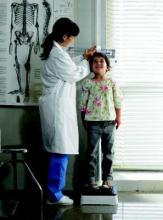More than half of children who are the costliest to cover in the Medicaid program eventually fall out of that category, according to new research.
A retrospective analysis of 48,743 children aged 1-18 years continuously enrolled in Medicaid during 2009-2013 across 10 states who were in the top 5% of all health care spending in 2010 found that from 2011 to 2013, “54.2% fell below the top 5% and did not return to the top 5% in 2011-2013,” Rishi K. Agrawal, MD, of the Ann and Robert Lurie Children’s Hospital, Chicago, and his colleagues wrote in a study published Sept. 15 online in Pediatrics (2016. doi: 10.1542/peds.2016-0682).
Children who were persistently in the top 5% accounted for 32.9% of the cohort and 12.9% of the children who were in the top 5% during 2010 fell out of and returned to the group of highest cost patients in the following 3 years.
“The highest likelihood of subsequent high spending was observed in older children with many chronic conditions, respiratory, or neuromuscular complex chronic conditions, and those who used home health services,” the authors noted. “Decreased likelihood of subsequent high spending was observed with children with hospital or ED [emergency department] use in 2010.”
“Understanding the clinical attributes of children most likely to experience persistent high resource use might help inform clinical approaches to optimize their health,” Dr. Agrawal and associates continued.
They added that previous literature and the authors’ clinical experiences suggest that those with multiple chronic conditions, especially a neuromuscular condition, “are at risk for underuse of primary care,” and without a primary care physician taking charge of overall care coordination, that burden falls on the families.
“Perhaps population health initiatives (e.g., enhanced medical homes or neighborhoods for children with medical complexity, complex care networks) designed to alleviate these specific issues might benefit children who are the most likely to have persistent high resource use,” Dr. Agrawal and his colleagues wrote.
The authors cited no relevant financial disclosures. Jay G. Berry, MD, was supported by the Agency for Healthcare Research and Quality, and Eyal Cohen, MD, was supported as a Harkness Fellow in Health Care Policy and Practice by the Canadian Foundation for Healthcare Improvement and the Commonwealth Fund.


